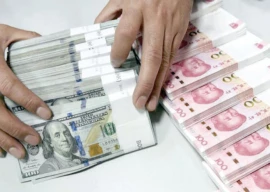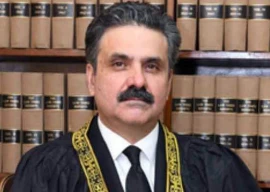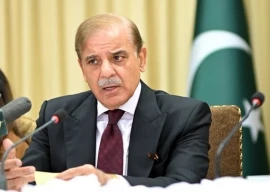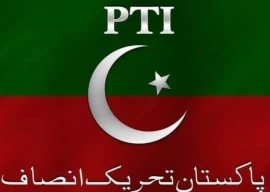
When it was established in 1858, the Government Main Primary School Sukkur enjoyed a reputation for quality education – everyone wanted their child to get admission into the school. The institution’s building, capable of accommodating 1500 students would regularly host more than 2000 because of its popularity.
Now, however, the oldest co-education school in the city has a student population that barely amounts to 400, of which only 65% attend their classes regularly. The diversity of incomes which was earlier represented amongst the students has narrowed down drastically – while pupils who belong to a more privileged class have opted for private schools, it is the poverty-stricken demographic with little choice that continues to attend Main Primary. With a decline in the standard of public schools and the cropping up of private schools all over the country, the Main Primary school no longer has the standing it once did.
Classes in this institution don’t run according to the official timetable. Rather, one teacher is responsible for teaching all seven subjects including English, Sindhi, Urdu, Maths, Science, Social Studies and Islamiat. At 8 am, instructors teach a variety of subjects till 10:45 am. This haphazard process is repeated after a half hour recess. Pupils may opt for being taught either in Sindhi, or in Urdu. Many of those studying in the Urdu section of the school however, especially those from rural areas in Sindh, face immense difficulty because of language barriers.
“Private schools no better”
Most of the students don’t wear a uniform, senior teacher Munawwar Ali Abro explains, because they can’t afford to. The students who attend are poor and their parents appear once to admit their children – but over the next five years of the children’s education, they’re barely seen, Abro says.
Abro argues that education standards in the private schools are far from satisfactory; although people level this allegation against his own institution. People prefer to send their children to private schools out of concern for ‘status’ he says, adding that this trend continues although most private schools have inexperienced and low-paid teachers, who take little interest in imparting education. Parents therefore have to arrange for a tutor, despite spending a considerable amount on school fees and transport charges. According to Abro, the only reason that Main Primary has witnessed a drop in its population is the troubling student divide caused by differences in fees.
The students speak out
Amna, a fourth grader explains during her recess that she helps her mother who prepares Sindhi rillies (quilts) in her free time. “My mother charges Rs. 250 to Rs. 300 per rilli, out of which I get Rs. 20 per rilli”, she says. When asked how she handled her studies alongside her work she says, “My studies are going well, but I’m scared that I may have to quit school after completing primary school like my older sisters”. It is apparent that the school also faces the problem of trying to teach students who have little encouragement, or perhaps little choice, to learn.
Sindh: A poor record
A programme officer of the education department, Shafi Mohammad, told The Express Tribune that there are 48,900 primary schools in Sindh, where 4.3 million children are enrolled. He soon backtracks on his statement, saying that out of the 48,900 schools mentioned, 5,000 were shut down for a variety of reasons.
The dropout rate for boys, he says, is 22 per cent, while surprisingly it was almost equal for girls at 21 per cent. When asked about any considerable changes in the literacy rate in the province over the decade, he said that while it had remained fairly steady, the 2010 floods and this year’s heavy rainfall have caused considerable damage to education and its infrastructure in the province, with its long-term effects yet to be comprehended.
According to Education Executive District Officer Sukkur Jay Ram Das, every primary school receives Rs22,000 annually under the school management committee fund – a meagre amount if one takes into account that these funds are to last a whole year. On being asked why such insufficient funds were being provided, the EDO replied, “What I can say? This is the policy of the government”.
Little hope in sight
An officer of the general administration, requesting anonymity, presents an even bleaker picture. Out of the 48, 900 schools that are listed, 12,794 have no building, more than 10,000 are without electricity, more than 23,000 schools have no toilets and more than 15,000 have no drinking water facilities. The phenomenon of ghost schools remains rampant throughout the province, with the non-existent ‘schools’ being close to 4500 in number. edited by Heba Islam
Published in The Express Tribune, October 31st, 2011.
COMMENTS (2)
Comments are moderated and generally will be posted if they are on-topic and not abusive.
For more information, please see our Comments FAQ



1730959638-0/trump-(19)1730959638-0-165x106.webp)













Even more tragic that DAWN editors refuse to correct direct translations from the Urdu language. A few examples from this piece:
to get admission into the school => "school main admission karanay ke liye" should be: to have their children admitted to the school.
no longer has the standing it once did => "Ab uss ki woh 'standing' nahin hay" should be: no longer commands the repute it once did
parents appear once to admit their children=>"Bachon ko admit karanay ke liye aatay hain" should be: appear once at the time of admission
Other than that, excellent reporting. It would be nice if Mr.Memon / Ms.Islam could take up the matter of "Ghost Schools" in far more detail. Please try to give us an estimate of the funds that the "waderas" are gobbling-up in the name of non-existent schools, and the role the wadera-culture is playing in eliminating education from interior-Sindh.
Sukkur is in Sindh, why is this news reported in Punjab section ?